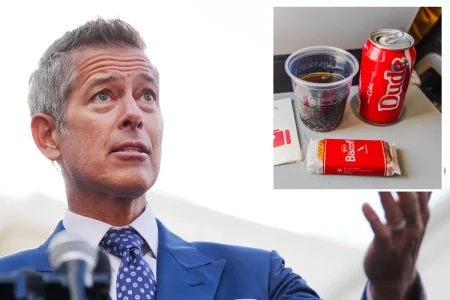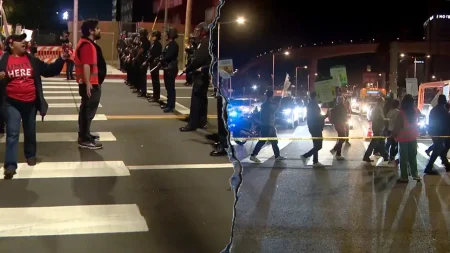Trump-Zelensky Meeting Ends Without Breakthrough on Ukraine Peace Efforts
Diplomatic Tensions Rise as High-Stakes Summit Yields Limited Results
In a closely watched diplomatic encounter that many observers hoped would signal a potential pathway toward peace, President Donald Trump and Ukrainian President Volodymyr Zelensky concluded their highly anticipated meeting with no substantial progress toward ending the devastating conflict in Ukraine. The summit, which had been preceded by considerable speculation about possible breakthroughs, instead highlighted the persistent challenges and divergent perspectives that continue to complicate efforts to reach a cease-fire agreement in a war that has reshaped European security architecture and claimed thousands of lives.
The meeting, characterized by palpable tension and carefully measured statements from both leaders, took place against the backdrop of escalating military actions in eastern Ukraine and mounting international pressure for a diplomatic solution. Sources familiar with the discussions described an atmosphere that alternated between moments of cautious optimism and evident frustration as the two presidents engaged in what one senior diplomatic official termed “frank and substantive” exchanges on the core issues dividing their positions. President Trump, who had previously signaled his intention to take a more assertive role in peace negotiations, emphasized the United States’ continued support for a negotiated settlement but stopped short of offering specific new initiatives or concessions that might have facilitated immediate progress. “We had a good meeting, a very productive meeting,” Trump told reporters afterward, though his carefully worded statement notably lacked any reference to concrete outcomes or agreements. “There are complicated issues at stake, very complicated, but we’re talking, and that’s important.”
Historical Context and Strategic Implications of the Diplomatic Standoff
The meeting represents the latest chapter in a complex diplomatic saga that has unfolded against a historical backdrop of regional tensions, competing security interests, and profoundly different interpretations of the conflict’s origins and potential resolutions. Since the outbreak of hostilities, successive rounds of negotiations have yielded limited results, with temporary cease-fires frequently collapsing amid mutual accusations of violations and bad faith. International security analysts have consistently identified this conflict as one of the most significant threats to European stability in decades, with far-reaching implications for global security alliances, economic relationships, and the broader international order. Dr. Eleanor Garfield, director of the Institute for Strategic Studies, explained that “what we’re witnessing is not simply a regional conflict but a fundamental test of post-Cold War security arrangements and international norms regarding sovereignty and territorial integrity.”
President Zelensky, whose leadership has been defined by his navigation of both military pressures and diplomatic challenges, arrived at the meeting having repeatedly emphasized that any sustainable peace agreement must respect Ukraine’s sovereignty and territorial integrity. Following the talks, the Ukrainian leader struck a measured tone while addressing international media, acknowledging the difficulty of the negotiations while reaffirming his country’s fundamental positions. “Ukraine appreciates the opportunity for direct dialogue at the highest level,” Zelensky stated, his expression betraying the weight of his nation’s circumstances. “We came to this meeting with clear priorities: securing a genuine cease-fire, protecting our citizens, and preserving Ukraine’s sovereign rights under international law. These remain our non-negotiable positions.” The Ukrainian delegation later released a statement emphasizing that while they welcomed continued diplomatic engagement, they would not accept any agreement that formalized territorial losses or compromised their country’s future security arrangements.
Behind Closed Doors: The Dynamics of High-Stakes Negotiation
Behind the carefully managed public appearances, sources close to both delegations described a meeting characterized by significant challenges and occasionally heated exchanges. According to one senior official who requested anonymity due to the sensitivity of the discussions, the talks repeatedly encountered obstacles around several key issues, including the status of contested territories, security guarantees, and the implementation mechanisms for any potential cease-fire. “There were moments when it seemed like progress might be possible,” the official revealed, “followed by fundamental disagreements that highlighted just how far apart the positions remain on core questions.” Another diplomat familiar with the discussions noted that while both presidents expressed genuine desire to end the bloodshed, their visions for how to achieve this goal and what a post-conflict settlement should look like remained fundamentally incompatible on several critical points.
The diplomatic corps from both countries worked intensively throughout the meeting to identify potential areas of agreement and draft language that might bridge the considerable gaps between positions. Career diplomats with decades of experience in conflict resolution efforts shuttled between rooms with draft proposals and compromise language, seeking formulations that might satisfy the core requirements of both sides without triggering immediate rejection. Ambassador Victoria Harding, a veteran diplomatic negotiator who observed similar processes in previous conflicts, explained that such high-stakes negotiations often involve complex layers of communication. “What the public sees is just the tip of the iceberg,” Harding noted. “Below the surface, teams of experts are working through intricate details of security arrangements, monitoring mechanisms, economic considerations, and dozens of other interconnected issues that all must align for a viable agreement to emerge.” Despite these intensive efforts, the meeting concluded without the joint statement or roadmap for future negotiations that many observers had hoped might signal tangible progress.
International Reactions and the Path Forward for Ukraine Crisis Resolution
International reaction to the inconclusive meeting reflected the complex global stakes in the conflict, with allies and observers from various capitals offering cautiously worded statements that acknowledged the continuing diplomatic efforts while expressing concern about the lack of concrete progress. European leaders, particularly those from countries bordering Ukraine, issued statements emphasizing the urgent need for a sustainable cease-fire while reaffirming support for Ukraine’s sovereignty. German Chancellor Marcus Weber characterized the meeting as “an important diplomatic step, even without immediate breakthroughs,” while French President Élise Moreau called for “intensified multilateral efforts to support a just and lasting peace.” Russian officials, meanwhile, issued their own assessment, with Foreign Minister Sergei Lavrov suggesting that “unrealistic expectations and preconditions continue to obstruct practical progress toward peace.”
As the diplomatic dust settles following this high-profile but ultimately inconclusive summit, attention now turns to what comes next in the peace process. Security analysts, humanitarian organizations, and diplomatic observers are closely monitoring several key indicators that might signal whether the meeting, despite its lack of immediate results, has created openings for future progress or instead represents another missed opportunity in a conflict that has defied resolution efforts. Dr. Jonathan Reeves, director of the Center for Conflict Resolution at Georgetown University, suggested that the coming weeks will be critical in determining the meeting’s ultimate significance. “Often in these situations, what matters isn’t just what happens at the table but what actions follow,” Reeves explained. “Will we see decreased military activity? Will working-level discussions continue with renewed energy? Will other international actors step forward with fresh initiatives? The answers to these questions will tell us whether this meeting, for all its limitations, might still prove to be a turning point.” For the citizens of Ukraine, who continue to bear the heaviest burden of the conflict’s devastating human and economic costs, the diplomatic uncertainties translate into continuing hardship and an agonizing wait for the peace that has eluded their nation for too long.









